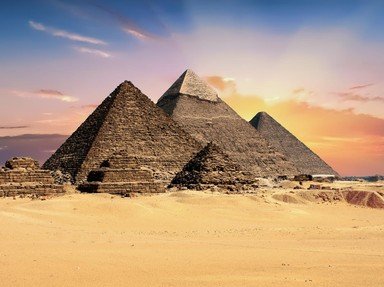Quiz Answer Key and Fun Facts
1. During which period of Egyptian history was the Great Sphinx constructed?
2. In which area of Egypt would one find the Great Sphinx?
3. What type of material was used to sculpt the Great Sphinx?
4. The image on the Great Sphinx is generally accepted as belonging to which pharaoh?
5. The Great Sphinx has the head of a man and the body of a?
6. By the time of the New Kingdom in Egypt, the Great Sphinx was buried to its neck in sand. There is a legend that a young royal prince, who was not in line to be pharaoh, fell asleep at the base of the statue. Visited by the Sphinx in a dream, the prince was told that he would one day become pharaoh if he cleared away the sand. This prince eventually became which pharaoh?
7. The legend about the Sphinx's nose is well known. Which European conqueror(s) is mistakenly given credit for causing the Sphinx to lose its nose?
8. What facial feature, missing on the Great Sphinx today, is believed to have been added to the statue several hundred years after its initial completion?
9. Today many believe that the Great Sphinx was actually painted brilliant colors.
10. Is the Greek story about the Riddle of the Sphinx related in any way to the Egyptian statue?
Source: Author
ponycargirl
This quiz was reviewed by FunTrivia editor
bloomsby before going online.
Any errors found in FunTrivia content are routinely corrected through our feedback system.

